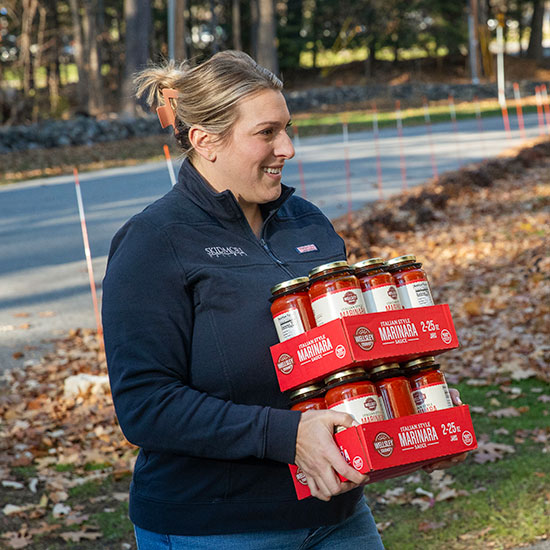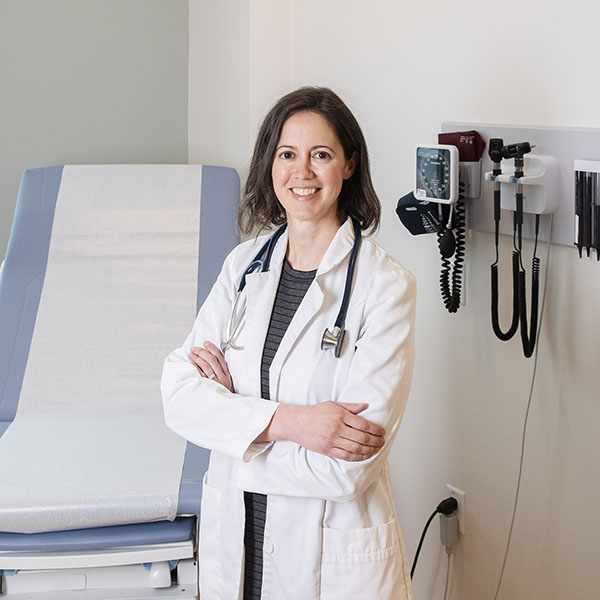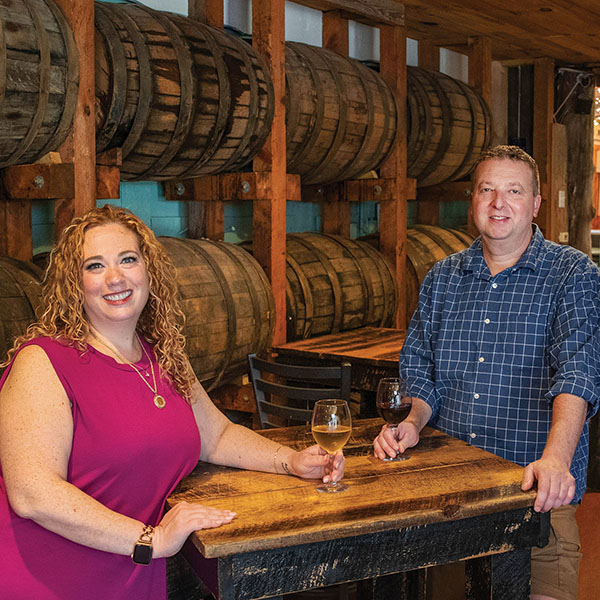Together in time: Skidmore’s Humanistic Inquiry Symposium

Skidmore’s Humanistic Inquiry Symposium is a celebration of faculty scholarship, creative exploration, and the interdisciplinary exchange that defines the liberal arts at Skidmore. Launched in 2018, the symposium returned to the Tang Teaching Museum and Art Gallery with a theme as expansive as it is intimate: time.
Organized by Jason Ohlberg, associate professor and associate chair of the Dance Department, and Barbara Black, Tisch Chair in Arts and Letters and professor of English, the symposium offered Skidmore faculty, students, and community members the chance to reflect on how various disciplines illuminate our state of being in time — or what the organizers called “timefulness.”
“It’s such a great moment that colleagues from across campus, across disciplines, get to come together and experience each other’s work,” Ohlberg said.
In her opening remarks, Black grounded the two-day gathering in the arc of the human experience. “Human life unfolds in stages over time — infancy, childhood, adolescence, adulthood, middle, and old age,” she said. “We come eventually to the end time — this is often where the work of religion and faith gets enacted with greatest consequence.”
The organizers thanked Trustee Barbara Kahn Moller ’78 P’11 ’13 and former Trustee Katherine Gross P ’16 for their generous support of the program.
Each of the faculty presenters approached time from a unique disciplinary angle. Jeff Segrave, professor of Health and Human Physiological Sciences, considered time in the realm of sport, where human intervention allows us to manipulate the clock. “Sport is a temporarily sealed off world,” he explained. “Real time is suppressed and subject to human control and contrivance: Conveniently, we can manipulate time in sport: Time out, extra time, overtime. Put time on the clock. Take time off the clock. Stop time.”
Drawing on his experience teaching an interdisciplinary Science and Society course with fellow faculty, Ryan Overbey, Robert H.N. Ho Family Foundation Associate Professor in Buddhist Studies, explored another world of constructed time: the eschatological views of artificial intelligence. “Many of the proponents of generative AI prophesy imagined futures that swing pretty wildly between utopian bliss and apocalyptic dystopian doom,” he said, likening their visions to religious narratives about destiny and salvation.
Emilio Vavarella, assistant professor of film and media studies, reached back centuries to examine the clessidra, or water clock, as an early method of tracking time’s passage. “It rendered the flow of time visible,” he said. “Gushing in or out of the clessidra, the medium of water became the matter of time.”
Marc C. Conner, president of Skidmore College and professor of English, reflected on memory and temporality in Brian Friel’s play “Dancing at Lughnasa,” which is set in County Donegal, Ireland, in 1936. “The play is less concerned with what happened in the past and is much more concerned with how the present recalls that past,” he said. “What is memory but the encounter with time — the past and its relation with the present?”
Lisa Jackson-Schebetta, professor and chair of the Department of Theater, considered the work of Colombian playwright Patricia Ariza and how performance could help communities process collective trauma. “The performance contributes to co-ownership of a significant aspect of violence and trauma in the Colombian conflict,” she said, “rooted in both longer histories of colonialism as well as distinct temporal cultures and experiences and cosmologies of time and space.”

Rodrigo Schneider, associate professor of economics, shares a personal and philosophical reflection on the meaning of time during the Humanistic Inquiry Symposium.
Rodrigo Schneider, associate professor of economics, drew on the writings of Nietzsche, Dostoevsky, and St. Paul in asking how we should live if time is limited. “If God doesn’t exist ... time is meaningless and we don’t count. If God does exist, we must live wisely and make every second count,” he said. In his office, two stopped clocks now hang in his office, each marking the birth of one of his children. “They’re the reason that I try to redeem time,” he explained.
Brian Lawson, assistant professor of dance, reflected on the temporal nature of his art form. “Time has to elapse for dance to occur, or else we’re kind of looking at a photograph,” he said. He and collaborator Aaron Loux later performed “What if We’re Beautiful” live in the Tang exhibition “A field of bloom and hum.”
Drawing on a previous Tang exhibition, Rachel Roe-Dale, director of the First-Year Experience and professor of mathematics, explored mathematical representations of time using Grace DeGennaro ’78’s “Hours” painting series. “From afar the individual dots are no longer visible,” she said. “Instead, we’re left to view the continuous nature of time.”

Ian Berry, Dayton Director of the Tang Teaching Museum and Art Gallery, offers a tour of the exhibition “a field of bloom and hum” as part of the 2025 Humanistic Inquiry Symposium.
Cate Talley, assistant professor of French, considered how post-revolutionary France made sense of radical political change and imagined alternative futures. “The century that lies in our past was, at the time, a present,” she said. “Thinking about this past is for me a way of holding on to my faith in the openness of our future at moments when that’s hard to do.”
John Cosgrove, humanities librarian and acting College librarian, took a look at how the comic “Family Circus” plays with time, comparing compressed weekday panels to the expansive, imaginative Sunday cartoons.
Wearing multiple watches and bearing an hourglass, Dennis Schebetta, assistant professor of theater, brought time to life with skits, music, and a countdown that invited the audience to feel the passage of time in real time. “Theater transports us through time and space,” he said. “How does it feel to wait for time to run out?”

Dennis Schebetta, assistant professor of theater, shows an hour glass as he leads a theatrical reflection on time — complete with music, props, and audience participation.
Michael Swellander, visiting assistant professor of German, turned to Johann Peter Hebel’s early 19th-century almanacs, which he said offer “alternative timelines … like slower recalcitrant eddies in a current crashing forward.”
Sarah Sweeney, associate professor and chair of the Department of Art, presented her project “Conversations with My Deepfake Dad,” which uses artificial intelligence to simulate conversations with her late father. “Time is my medium,” she said. “Some artists work with clay or paint, but I work with time.”
Joseph Cermatori, associate professor of English and Periclean Honors Forum director, explored George Frideric Handel’s 1725 opera ‘Rodelinda’ and how the opera depicts questions of time as it relates to politics and theology of the time. Adam Cottle, catalog and metadata librarian, examined the pithy inscriptions that often adorn sundials.
Catherine White Berheide, Tisch Family Distinguished Professor and professor of sociology, reflected on faculty time during the pandemic. “Increased demands, particularly in teaching but also in service, ate up everybody’s time,” she said, leaving little room for scholarship or rest.
The final word went to Thomas DeFrantz, professor at Northwestern University and director of SLIPPAGE: Performance|Culture|Technology, who also delivered the opening keynote address. “The time of gesture allows us to think about how elaboration or expansion can spread the terms of beauty through the practice of art making,” he said.
Over the course of two days, the Humanistic Inquiry Symposium offered not just a series of lectures, but an immersive experience in time through conversation, performance, and scholarship. In every sense, the symposium reflected the College’s motto: Creative Thought Matters.


